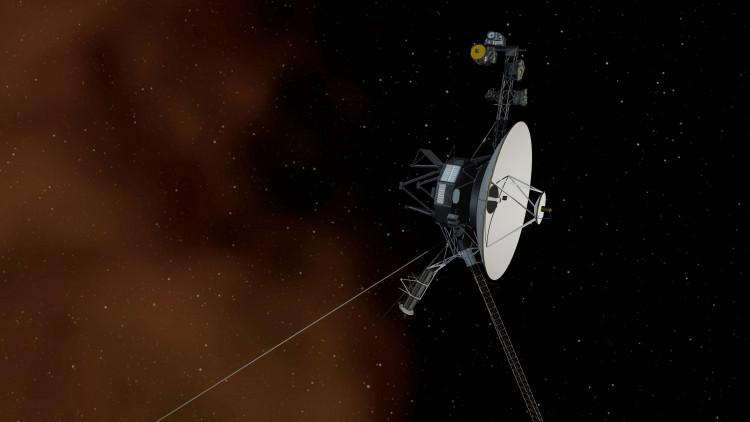Voyager 1, humanity's most distant spacecraft, has detected a strange "hum" emanating from beyond our solar system.
Fourteen billion miles from Earth, the Voyager's instruments detected a droning sound that could be produced by plasma (ionized gas) in the vast void of interstellar space.
The Voyager 1 space probe, along with its twin Voyager 2, was launched in 1977 and has been moving further and further into space. It has now crossed the boundary of our solar system, exiting the heliosphere, the sun-influenced bubble-like region of space.
Now, the spacecraft is moving through the "interstellar medium," where it recorded the peculiar sound, according to research published Monday in the journal Nature Astronomy.
A Cornell University-led team studied data transmitted from the spacecraft and discovered the interstellar emissions.
It essentially represents the background noise that can be detected in the vast space between star systems. These vibrations, known as persistent plasma waves, were detected at radio frequencies in a narrow bandwidth during a three-year period as Voyager 1 traverses interstellar space.
"The persistent plasma waves that we've just discovered are far too weak to actually hear with the human ear. If we could hear it, it would sound like a single steady note, playing constantly but changing very slightly over time," said Stella Koch Ocker, a Cornell University doctoral student in astronomy and lead author of the study.
Although scientists believe the constant background hum is emitted by interstellar gas, they are unsure what is causing it. It's possible that it's generated by "thermally excited plasma oscillations and quasi-thermal noise."
The new paper from Ocker and her colleagues at Cornell University and the University of Iowa also suggests that this is not the last we'll hear of the mysterious noise.
"The persistence of the emission indicates that Voyager 1 may be able to continue tracking the interstellar plasma density in the absence of shock-generated plasma oscillation events," the scientists write.
Voyager 1 is the most distant human-made object in space, traversing the vastness of space for 44 years now.
Listen to the eerie sound here.





